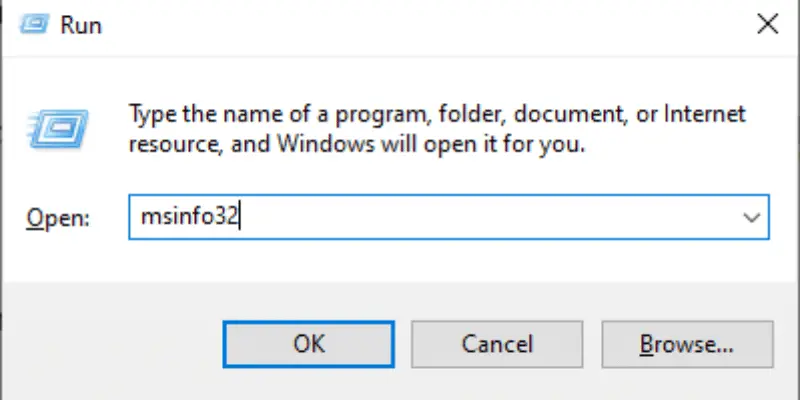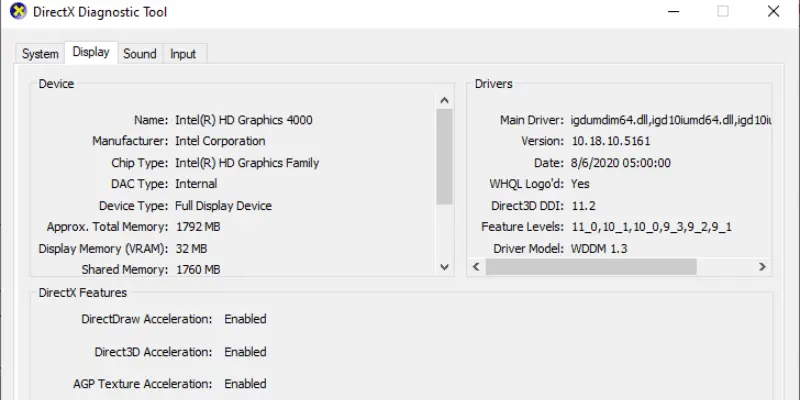How to Check Your Laptop’s Specifications (Quick & Easy Steps)
Published: 29 Jun 2025
Did you know that your laptop’s performance relies on its specifications? The processor, RAM, storage type, and graphics card impact your device’s performance. If your laptop runs slowly, it might be due to not having enough RAM or a powerful processor. Checking the specifications of a laptop computer allows you to understand its abilities before downloading programs or updating hardware. But how do you check these details? Most people attempt to find their laptop’s specifications, but it’s fairly easy. In this article, we’ll teach you how to check PC desktop specifications easily.
Why Should You Check Your Laptop’s Specifications?
Knowing your laptop’s specification list is important for many reasons, including upgrading, troubleshooting, or discovering the device’s capabilities. Here’s why it matters:
Check software compatibility: Make sure the laptop fulfills the system needs to operate specific software or games.
Plan upgrades: If you need more RAM, storage, or better graphics, looking at the specifications helps you plan for future changes.
Resale or trade-in value: If you plan to sell or trade-in your laptop, it’s helpful to know its specifications. The better the specifications, the greater the resale value!
Troubleshooting: If your laptop isn’t running well, checking the laptop’s specs can identify issues like insufficient RAM or an old processor.
Methods to Check Laptop Specifications
There are several ways to access this information depending on how detailed you want to go. Some methods provide a quick glance at basic specs, while others give you a deep dive into all hardware and software details. Let’s explore all the methods to see pc specs of Windows 10 and find everything you need.
A. Use a Simple Shortcut (Fastest Way)
The fastest method to assess your basic laptop specs is by using this shortcut:
1. Press the Windows + Pause/Break keys on your keyboard.
2. This will open the System Information window, where you can view:
- CPU
- RAM
- Windows version

This shortcut allows you a look at your laptop’s main specs, without needing to open any other apps or online spesc check tools.
B. Check Full System Information (Detailed Specs)
For a comprehensive view of all your laptop’s specifications, you can use the System Information tool. Here’s how.
1. Press “Windows + R” on your keyboard to open the Run dialog box.
2. Type msinfo32 and press Enter or click ok.

3. The System Information window will open and display detailed specifications such as:
- Processor: Manufacturer, model, and number of cores.
- RAM: Total installed memory.
- Storage: Type and size of your HDD or SSD.
- Graphics: Integrated or dedicated GPU.
- Windows version: OS version, build, and other relevant info.

This approach gives a full system overview, including hardware specifications, software versions, and much more.
C. Find Hardware Specs Using Command Prompt
For users who prefer using the Command Prompt, this method makes it simple to get your laptop’s specifications.
1. Press Windows + R, type cmd, then press Enter.
2. Copy this text “systeminfo” and then paste it into the command prompt window and hit Enter.
3. This will provide accurate information about your CPU, RAM, system model, and Windows version.
Although this way may be less user-friendly for beginners, it is a good choice for those who are comfortable using text-based tools.
D. Check Graphics Card Details
If you’re a gamer or video editor, your graphics card is an important part of your laptop. Here’s how to check it:
1. Press Windows + R, type dxdiag, and press Enter.
2. Click on the Display tab.
3. You’ll find details about your GPU (Graphics Processing Unit), including:
- Model name
- Memory size
- Driver version

This method will quickly assess your graphics performance and determine whether you have an integrated or dedicated GPU.
E. Check Storage and Battery Health
1. Open File Explorer or shortcut keys(Window + E) → Right-click on your main drive (usually C:) or any other drive you want to check → Then Click Properties.
2. In the Properties window, you can see your storage capacity, available space, and file system type (HDD or SSD).
For Battery Health
1. Open the Command Prompt or press “window + R”.
2. Copy this text “powercfg /batteryreport” and then paste it.
3. This will generate a battery report that gives you details on battery health and charging cycles.
This helps manage your storage and ensure your laptop runs efficiently over time.
F. Use Third-Party Tools for Extra Details
If you want even more advanced information, try these free tools:
- CPU-Z – Great for detailed CPU and RAM info
- Speccy – Full system overview in one clean dashboard
- CrystalDiskInfo – For checking SSD/HDD health
- HWiNFO – For temperature, power, and component diagnostics
These tools are ideal if you’re evaluating system health, planning upgrades, or buying a used laptop.
Yes, every laptop has a processor (also called a CPU). It’s the brain of the laptop that performs tasks and calculations, making sure everything runs smoothly.
For students, a good laptop should have at least:
- Intel i5 or AMD Ryzen 5 processor
- 8GB RAM
- 256GB SSD or more storage
- 13–15 inch screen
- Good battery life (6-8 hours)
These specs ensure smooth performance for tasks like online classes, assignments, and browsing.
A good gaming laptop should have:
- Intel i7 or AMD Ryzen 7 processor
- 16GB RAM
- 512GB SSD or more storage
- NVIDIA GTX 1660 Ti or RTX 3060 graphics card
- 15–17 inch screen with 144Hz refresh rate
This will give you the power to play high-quality games smoothly.
For work, especially if using productivity software or video calls, choose a laptop with:
- Intel i5 or AMD Ryzen 5 processor
- 8GB RAM
- 256GB SSD storage
- 14–15 inch screen for clear viewing
- Long battery life (8+ hours)
This setup is great for multitasking and staying productive.
Conclusion
Checking your laptop’s specs is an easy but important way to understand how it works. With this information, you may make informed decisions about diagnosing, upgrading, or buying or selling your laptop. By following the instructions above, you are able to find a complete list of the laptop’s specifications, ensuring that you use your laptop to its full potential.

- Be Respectful
- Stay Relevant
- Stay Positive
- True Feedback
- Encourage Discussion
- Avoid Spamming
- No Fake News
- Don't Copy-Paste
- No Personal Attacks



- Be Respectful
- Stay Relevant
- Stay Positive
- True Feedback
- Encourage Discussion
- Avoid Spamming
- No Fake News
- Don't Copy-Paste
- No Personal Attacks





